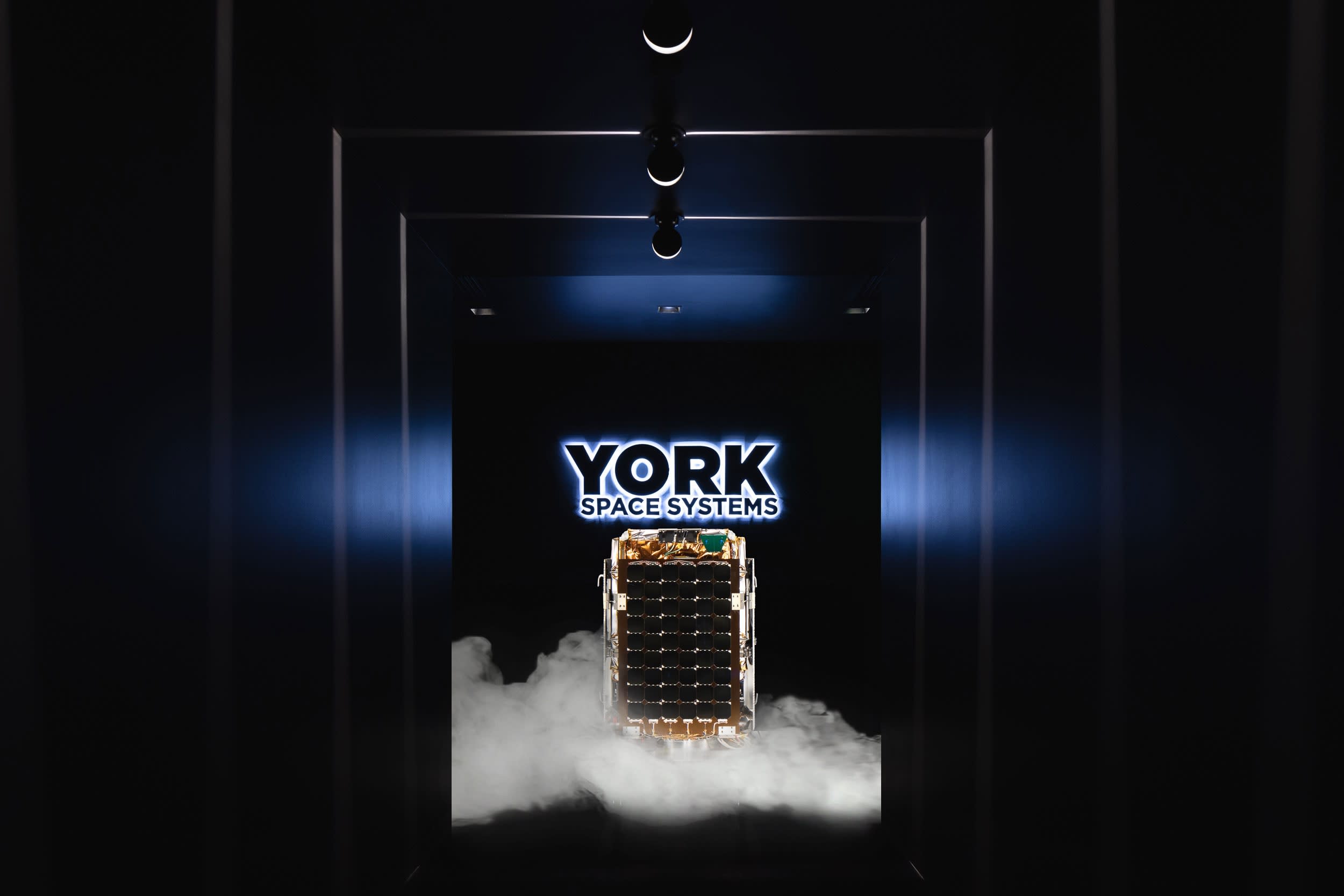
The company’s existing building on the left, with a rendering of the planned expansion on the right.
York Space Systems
York Space, which builds spacecraft for customers wanting to operate satellites in orbit, on Tuesday announced an expansion of its production facilities at the company’s headquarters in Denver, Colorado.
“This ‘mega facility’ will really be true high-rate production for the demand that we’re seeing in both the commercial and government markets now,” York Space CEO Dirk Wallinger told CNBC, saying that it adds “a true robust production capability to help secure our supply chain and help us expand the contracts that we’re working on with existing customers.”
York’s new facility will quadruple the company’s total footprint, adding around 100,000 square feet next door to its current headquarters. Wallinger said the company’s existing facility can already manufacture “up to 1,000 spacecraft a year” but the expansion, which is due to open 18 to 24 months, will “blow that out of the water as far as total production capacity goes.”
Wallinger noted that York’s capabilities have steadily improved since its founding in 2015, from four spacecraft at a time, to now 20 simultaneously before the expansion.
“We understand how to manufacture the products at scale … right now we’re at about three months [to build a spacecraft],” Wallinger said. “The new facility is going to reduce it to 30 days.”
A ‘more traditional’ business growth path
Unlike many of the space companies founded in the past decade, Wallinger said York is not venture capital backed – with “some very strong traditional finance backers” behind the company, the names of which the CEO did not disclose.
“We’re more traditional in our approach,” Wallinger said. “We’ve been very lucky in the ability that we’ve been able to see contracts and execute on them and grow the company.”
York has won contract awards for the Pentagon’s Space Development Agency, the U.S. Army, and a number of private customers. Wallinger estimated that York’s current spacecraft orders are split 65% to 35% between government and commercial companies, the latter of which often request strict non-disclosure agreements.
“We’re seeing a lot more of that with the Fortune 500 companies,” Wallinger said. “They are beginning to be involved in space, but they’re not talking about it.”
The spacecraft are used for a variety of purposes, Wallinger said, from imaging the Earth to “cyber secure communications.” “Global enterprise companies” have increased demand for the latter service, according to the executive.
That’s because companies understand communication systems vulnerabilities are “no longer acceptable,” so more firms are turning to in-house, space-based systems, he said.
The smartphone of spacecraft
The S-CLASS platform, designed for missions for a wide variety of government and commercial customers.
York Space Systems
York’s core spacecraft, the S-CLASS, is about the size of a household oven. The spacecraft’s compact design, as well as the reduction in size of spacecraft over the past two decades – which has gone from school bus-sized spacecraft to some as small as a mailbox – is analogous to what happened to smartphones over the years.
“Phones got smaller and smaller,” Wallinger said.
But after years of spacecraft shrinking, customers are now pushing the design the other direction. York last month unveiled its LX-CLASS spacecraft platform, reusing 90% of the hardware and software of the S-CLASS while tripling its power and available payload volume.
“Now people pay more for the extra large iPhone, right, because they want more capability. That basic trajectory we saw with phones is what we’re seeing with satellites as well,” Wallinger said.
IPO a ‘possibility’
The 16th Electron launch in November 2020, when the company recovered the rocket after splashdown for the first time.
Rocket Lab
York Space is “not quite” ready to go public, but Wallinger said an IPO is “a possibility.”
“That’s not necessarily a stake in the sand and where we’re all set to go, but it’s a possibility for us,” Wallinger said. “We’re really focused on execution.”
In the broader space market, Wallinger noted that more rocket builders are trying “to move into spacecraft” building as well, such as Rocket Lab or Astra. York isn’t worried about the competition, as Wallinger said, “our customers don’t want to be tied to one rocket,” as “if you have a problem with one rocket then you’re not compatible” to launch on another one.
Additionally, while there are “a lot” of rockets in development, Wallinger thinks the supply of U.S.-built orbital-class rockets remains limited. That sector is currently led by SpaceX, United Launch Alliance and Rocket Lab, with Virgin Orbit recently joining after its first successful orbital launch.
“We’re hearing a ton of demand, [so] I think it’s important that we still continue to invest in launch vehicle infrastructure and capability. We don’t want to be as reliant on foreign-owned companies in order to put government assets into space,” Wallinger said. “If York can manufacture a lot of satellites, but we can’t get them to orbit, that’s going to be a challenge.”
Become a smarter investor with CNBC Pro.
Get stock picks, analyst calls, exclusive interviews and access to CNBC TV.
Sign up to start a free trial today.




